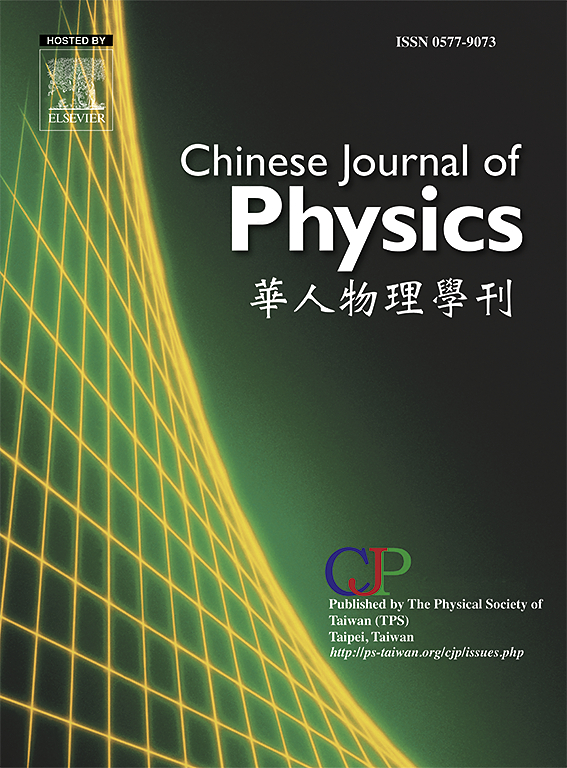Electro-optical sensors based on two-dimensional c3n2 structures for non-invasive gastric cancer detection: A first-principles study
IF 4.6
2区 物理与天体物理
Q1 PHYSICS, MULTIDISCIPLINARY
引用次数: 0
Abstract
In this study, we examined the potential of two newly predicted two-dimensional carbon nitride structures, namely P-C3N2 and I-C3N2, for use as sensors using density functional theory. The electronic and optical properties of monolayer and bilayer C3N2 sheets are studied, with a focus on their sensing capabilities for acetone, a volatile organic compound commonly found in the breath of individuals diagnosed with gastric cancer. Our findings indicate that the interaction between acetone and C3N2 sheets primarily involves physisorption, characterized by low adsorption energies. This weak binding enables easy desorption, enhancing the reusability of the C3N2 sheets as sensors. The semiconducting properties of the I-C3N2 sheet are not sensitive to acetone adsorption, whereas the P-C3N2 sheet exhibits a significant change in its band gap upon acetone adsorption. As the concentration of adsorbed acetone molecules increases, the band gap of monolayer and bilayer P-C3N2 sheets decreases, resulting in improved electrical conductivity. Moreover, it is demonstrated that the optical properties of monolayer and bilayer P-C3N2 are responsive to the presence and concentration of the acetone molecules. Our findings suggest that the P-C3N2 sheets have great potential as sensing materials for diagnosing gastric cancer through the detection of exhaled gases, even in the presence of interfering molecules.
求助全文
约1分钟内获得全文
求助全文
来源期刊

Chinese Journal of Physics
物理-物理:综合
CiteScore
8.50
自引率
10.00%
发文量
361
审稿时长
44 days
期刊介绍:
The Chinese Journal of Physics publishes important advances in various branches in physics, including statistical and biophysical physics, condensed matter physics, atomic/molecular physics, optics, particle physics and nuclear physics.
The editors welcome manuscripts on:
-General Physics: Statistical and Quantum Mechanics, etc.-
Gravitation and Astrophysics-
Elementary Particles and Fields-
Nuclear Physics-
Atomic, Molecular, and Optical Physics-
Quantum Information and Quantum Computation-
Fluid Dynamics, Nonlinear Dynamics, Chaos, and Complex Networks-
Plasma and Beam Physics-
Condensed Matter: Structure, etc.-
Condensed Matter: Electronic Properties, etc.-
Polymer, Soft Matter, Biological, and Interdisciplinary Physics.
CJP publishes regular research papers, feature articles and review papers.
 求助内容:
求助内容: 应助结果提醒方式:
应助结果提醒方式:


